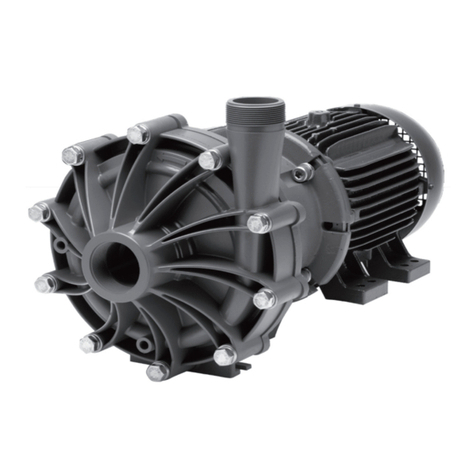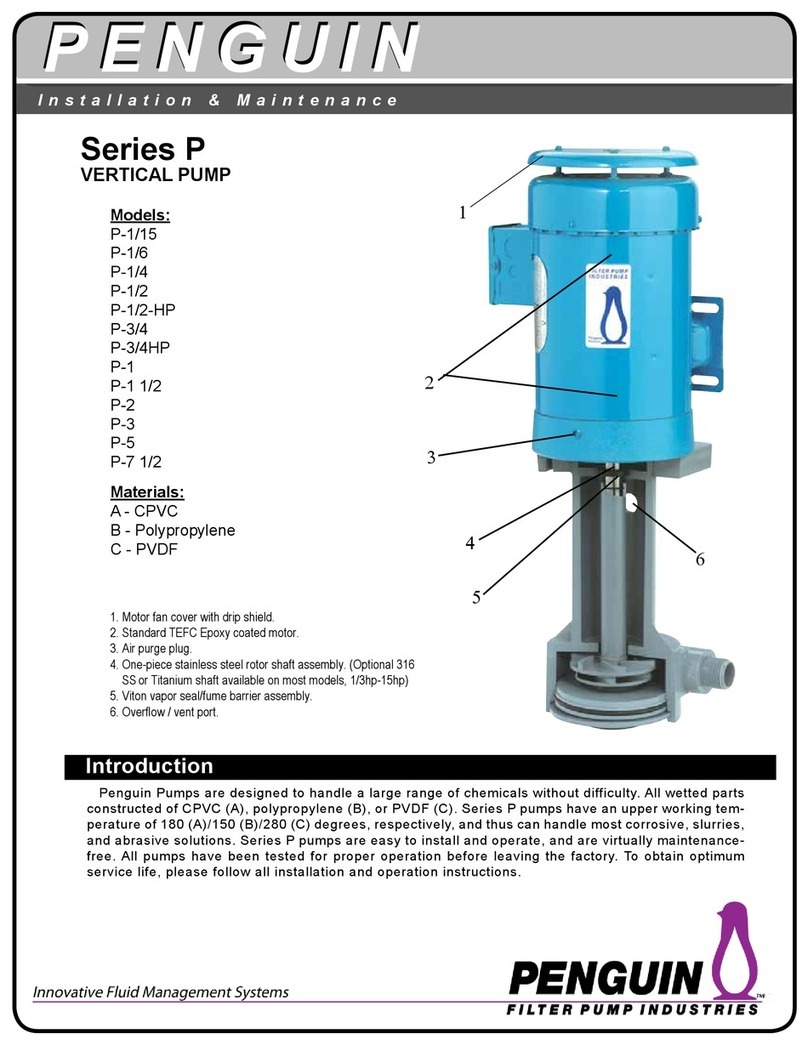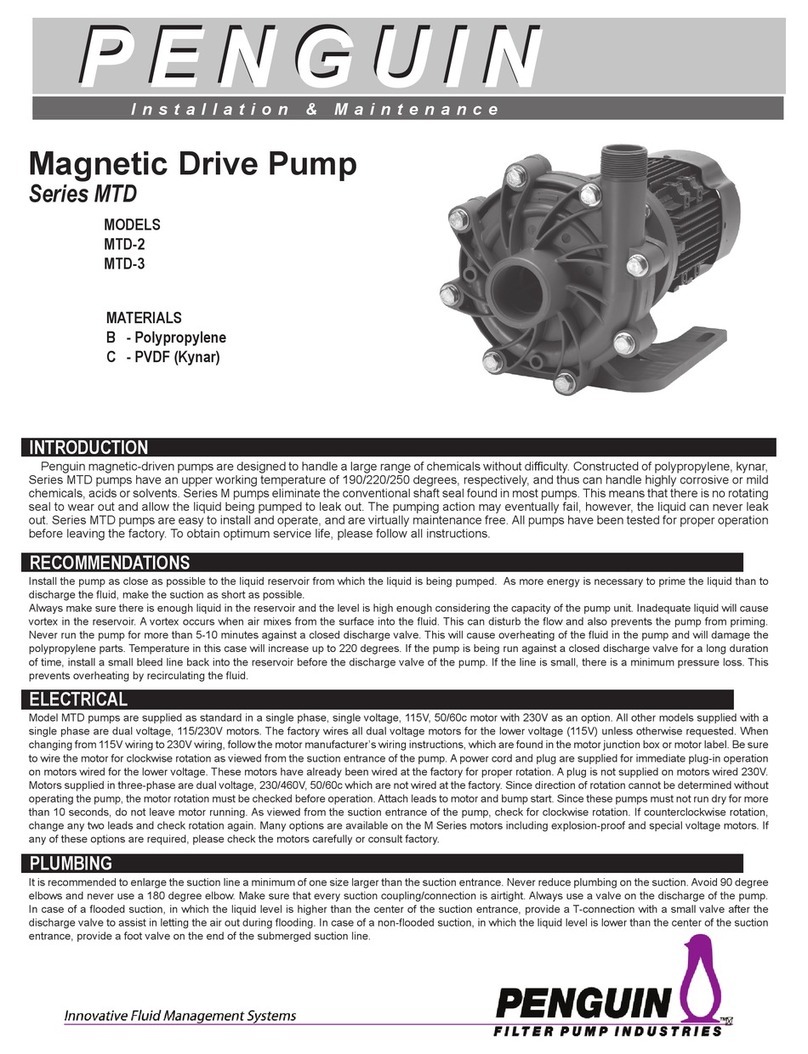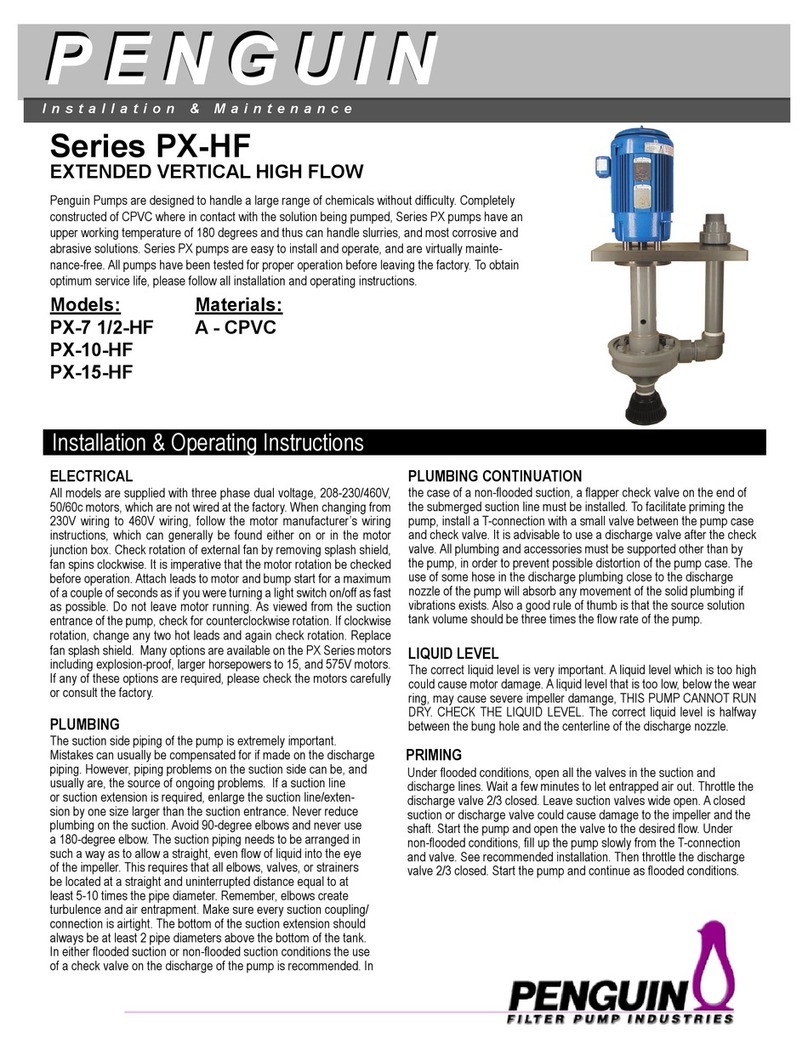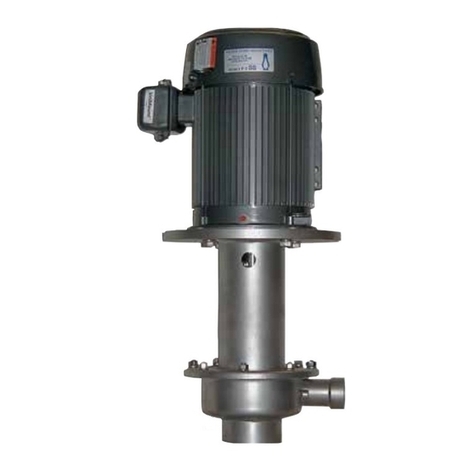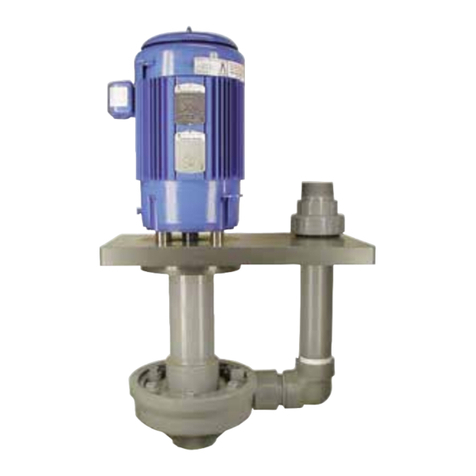
Motor/Electrical
Motor/Electrical
Onlyqualiedpersonneltrainedinthesafeinstallationandopera-
tionofthisequipmentshouldinstallthemotor.Installthemotor
accordingtoNationalElectricCode,NEMAMG-2,IECstandards
requirementsand/orapplicablelocalelectricalcodes.Thevoltage
andfrequencyvariationsofthepowersupplyshouldnever
exceedthelimitsestablishedintheapplicablestandard.Priorto
connect-ing to the power line, check nameplate voltage, rotation
connectionandensurepropergrounding.Sufcientventilation
area should be provided to insure proper operation and cooling
ofthemotor.Themotormustbeinstalledwithasuitableoverload
protectioncircuit.Forthreephasemotorsitisrecommendedto
installaphasefailureprotectiondevice.Downloadthemotor
manualfromthespecicmotormanufacturers’websitefor
additional information concern-ing motor installation, safety and
maintenanceinstructions.
Wirethemotorforcounterclockwiserotationwhenfacingthefan
endofthemotor.
CAUTION: Donotoperatethepumptocheckrotationuntilthe
pumpisfullofliquidordamagemayoccurevenifthemotoris
“bumped”tocheckmotorrotationdirection.
Checkallelectricalconnectionswiththewiringdiagramonthe
motor.Makesurethevoltage,frequency,phaseandampdraw
complywiththesupplycircuit.
Ifutilized,verifythatpowermonitorsorvariablefrequencydrives
have been properly installed according to the manufacturer’s
instructions.
NOTE:Apumprunningbackwardswillpump,butagreatly
reducedowandpressure.
IfmotorissuppliedbyFinishThompsonpleaseusethewiring
diagramprovidedundertheconduitboxcoveronthemotor.
To verify correct rotation of the motor:
1.Installthepumpintothesystem.
2.Fullyopenthesuctionanddischargevalves.
3.Allowuidtoowintothepump.Donotallowthepumptorun
dry.PTFEorceramicbushingscan’tberundrywithoutdamage
to pump components.
4.Jogthemotor(allowittorunfor1-2seconds)andobservethe
rotationofthemotorfan.Refertothedirectionalarrowmoldedinto
thehousing.
NOTE: Apumprunningbackwardswillpumpbutatagreatly
reducedowandpressure.
Section III - Start- up and Operation
1.Thispumpmustbelledfromaoodedsuctiontank(gravity)or
primedwithliquidfromanoutsidesource.DBSeries
pumpsarenotself-priming.
2.Opentheinlet(suction)anddischargevalvescompletelyand
allowthepumptollwithliquid.
3.Closethedischargevalve.
4.Turnthepumpon.Slowlyopenthedischargevalve.Adjustthe
owrateandpressurebyregulatingthedischargevalve.Donot
attempttoadjusttheowwiththesuctionvalve.
5.Useofapowermonitorisstronglyrecommendedforpumps
withPTFEbushings.Thepowermonitorwillstopthepumpand
helppreventdamageifthepumpshouldrundry.
Shutdown
Usethefollowingproceduretoshutdownthepump.
1.Slowlyclosethedischargevalve.
2.Turnoffthemotor.
3.Closethesuctionvalve.
Flush Systems
CAUTION:Someuidsreactwithwater;usecompatible
ushinguid.
1.Turnoffthepump.
2.Completelyclosethesuctionanddischargevalves.
3.Connectushinguidsupplytoushinletvalve.
4.Connectushinguiddraintoushdrainvalve.
5.Openushinginletandoutletvalves.Flushsystemuntilthe
pumpisclean.
Section IV - Maintenance
Recommended Maintenance Schedule
The recommended maintenance schedule depends upon the
na-tureoftheuidbeingpumpedandthespecicapplication.
Ifthepumpisusedonacleanuid,itisrecommendedthatthe
pump be removed from service and examined after six months of
op-erationorafter2,000hoursofoperation.Ifthepumpisused
onuidswithsolids,hightemperatures,orinotherconditions
that could cause accelerated wear, then this initial examination
shouldbesooner.
Aftertheinitialexaminationoftheinternalcomponentsandwear
itemsaremeasured,aspecicmaintenanceschedulecanbe
determined.Forbestresults,itisrecommendedthatthepump
beremovedfromserviceannuallyforexamination.
Section V - Disassembly
WARNING:RotatingParts.Thispumphascomponentsthat
rotatewhileinoperation.Followlocalsafetystandardsforlocking
out the motor from the power supply during maintenance or
service.
WARNING:ChemicalHazard.Thispumpisusedfortransferring
manytypesofpotentiallydangerouschemicals.Alwayswear
protective clothing, eye protection and follow standard safety
procedures when handling corrosive or personally harmful
Motor/Electrical/Maintenance/Disassembly
6

